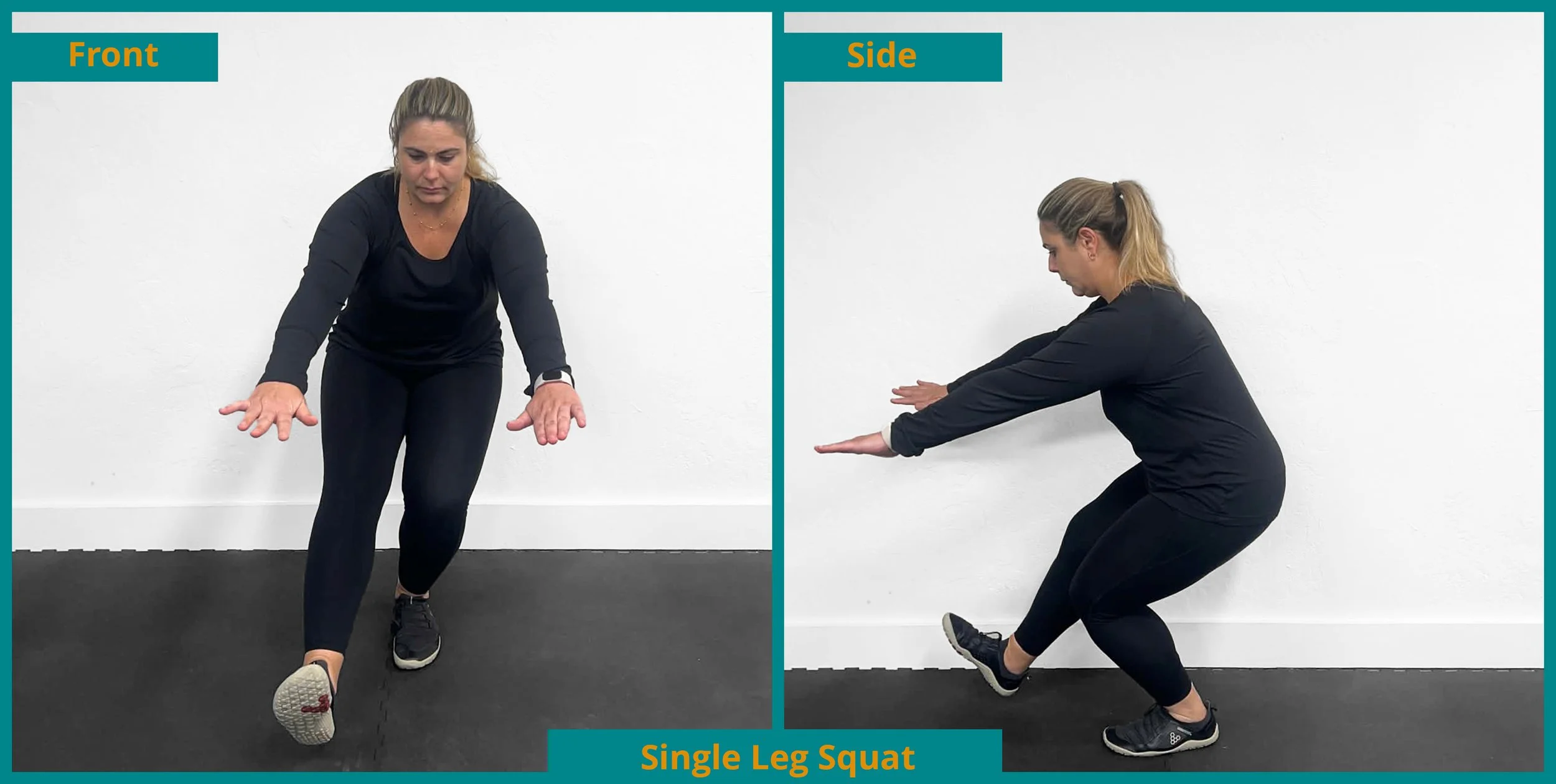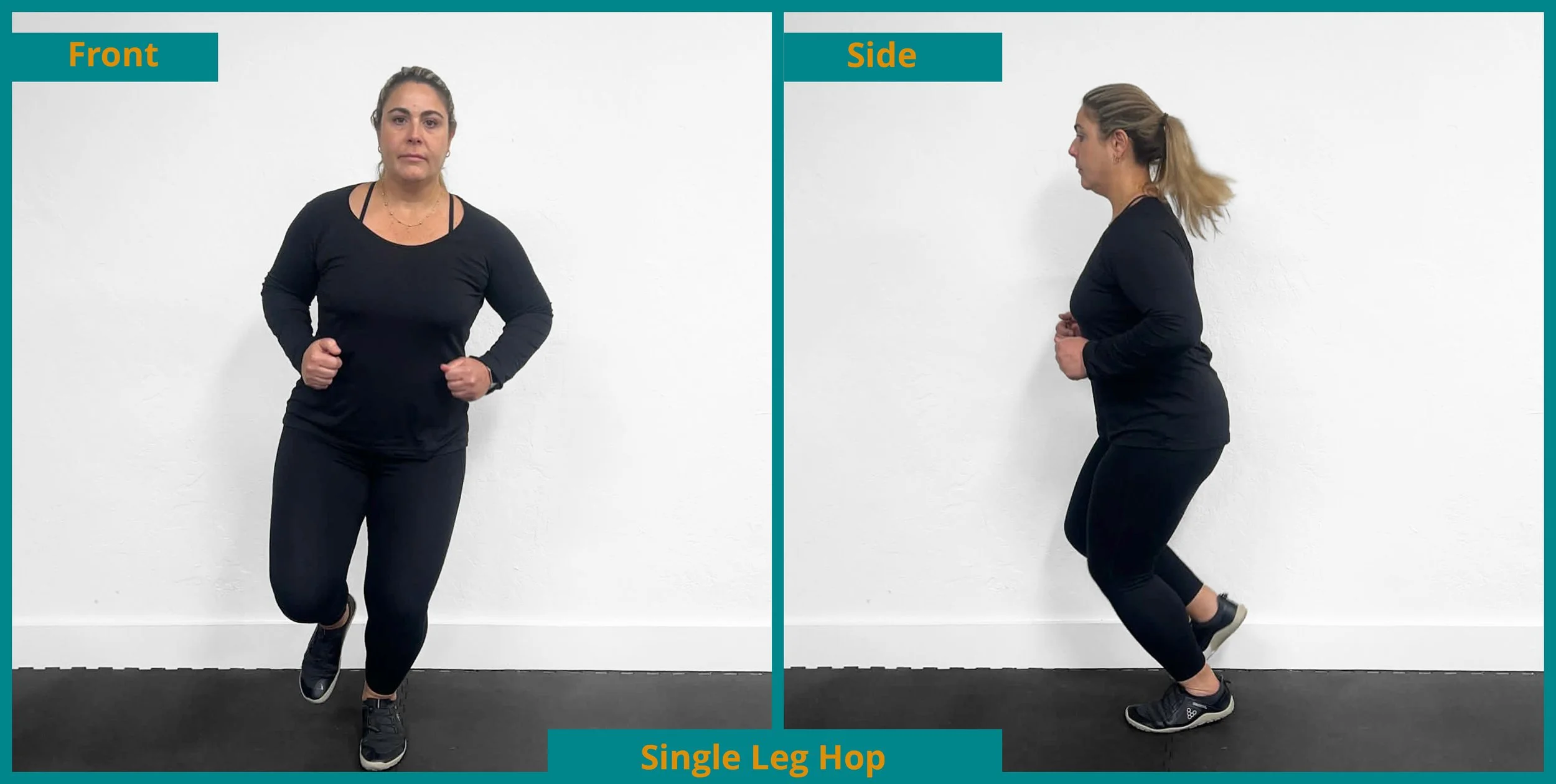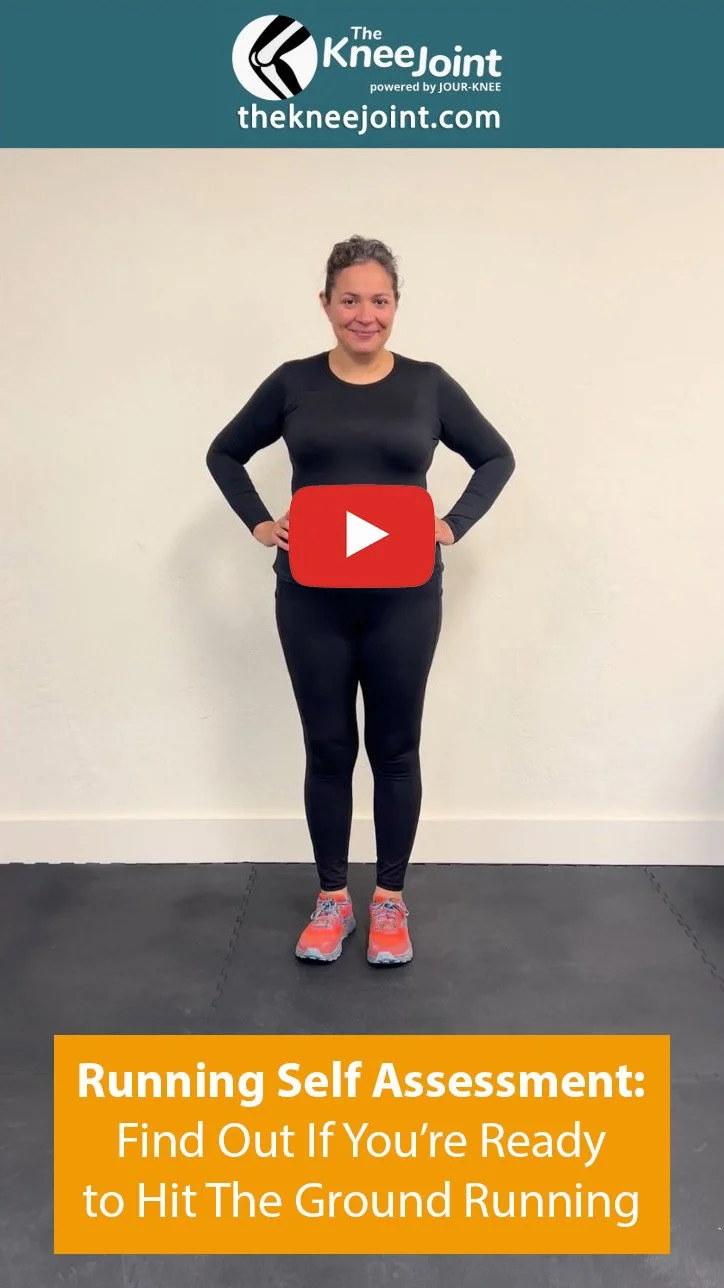Running Self Assessment: Find Out If You’re Ready to Hit The Ground Running
Whether you are training for a big race or just lacing up for your neighborhood Turkey Trot, running well starts with understanding how your body moves. Pain free running does not come from increasing weekly mileage alone, it comes from the foundational pillars of posture, balance, strength, and control. Danielle Sartori, Doctor of Physical Therapy demonstrates the movements and runner self assessment positions in the images below. The movements are designed to help you see exactly how your body is working right now so you can identify imbalances before they turn into running injuries. By walking through this simple test you will get a clearer picture of your movement patterns and adjustments you can make to create a healthier and more efficient experience.
1. Posture: First, let’s look at your posture across all three planes of motion (frontal - front, sagittal - side, transverse - back/horizontal). When observing the recording, look for asymmetries between the right and left, the front and back, as well as muscle bulk and alignment.
2. Balance: Second, look at your balance across all planes using both the front and side views. Pay attention to how steady you are and how long you can hold a one-leg stance on each side. You should be able to stand on one leg on a firm, level surface while keeping a stable arch, level pelvis and shoulders, and your head centered. Aim to maintain this for 20 to 45 seconds, per side and per view depending on your age.
3. Strength and Control: Third, check how well your glutes and hips are working, and whether your body moves in the right order. Pay attention to how smooth and coordinated everything feels. You’ll look at this in three ways below.
Glute activation and hip control: Do a few slow single-leg squats on each side. Check yourself from the front and the side views. Notice how steady you are and whether both sides feel the same. Your goal is to reach about a parallel position, using a knee-height surface if you need it, while keeping your pelvis level, your standing leg stable, and your foot arch strong.
Neurological sequencing: Perform a few slow single-leg squats. Watch for what moves first. Do you initiate movement at the hip and then the knee, or do they move together at the same time? Ideally everything should move in sync so the squat looks smooth and connected.
Overall motor planning: Try some single-leg hops on each side and make sure to pause for three seconds after each landing. Look at yourself from the front and the side. Just like with the double and single leg squats, your hips, knees, and ankles should move together. Land softly and with control, keep your knee from caving in, and aim for similar hop distances and good posture on both sides. The distance covered should be symmetrical side to side.
Finally, once you finish your running self-assessment, take a moment to be honest and ask yourself these three simple questions:
How symmetrical is my posture?
How is the quality of my movement?
How much can I do, and how does it feel?
If you notice clear asymmetries or anything feels off, please reach out to Team JOUR-KNEE. We can help you begin your JOUR-KNEE toward a stronger, safer running.
P.S. If you’d like to see the full runner assessment in action, take a look at this YouTube video clip narrated by Danielle Sartori. It features our model Julia, a post ACL recovery runner who regularly trains for 5k, 10k, and half-marathon distances. After completing this assessment, we reviewed what we saw together, built a performance training program that targets her imbalances, and supports her speed, for long-term resilience and pain free running.
We’ll be following Julia’s progress, and we’re here to support yours too. If you have any questions, drop them in the comments below.





